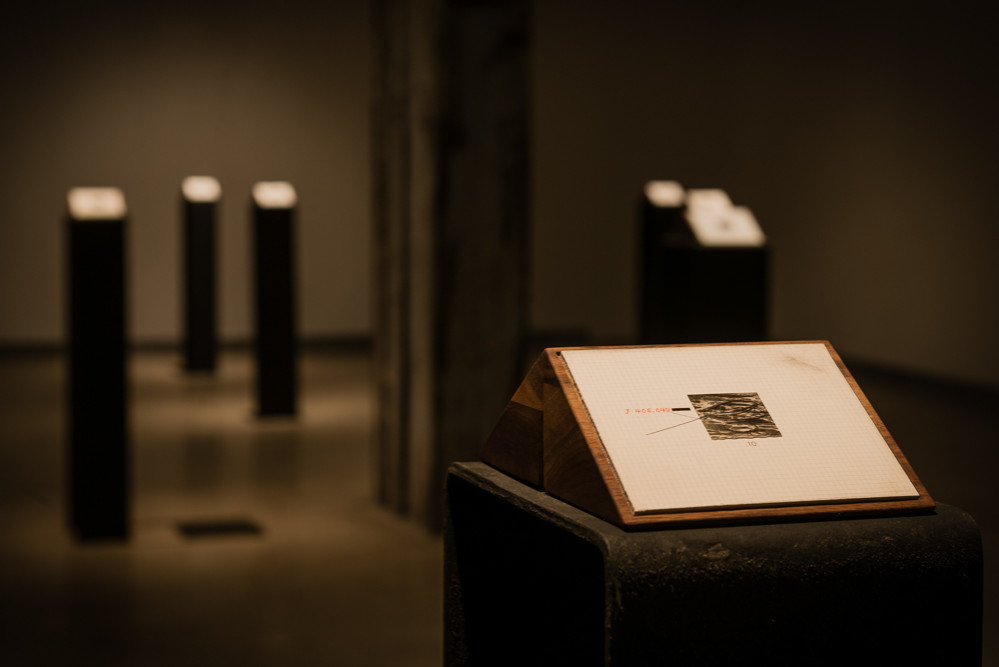
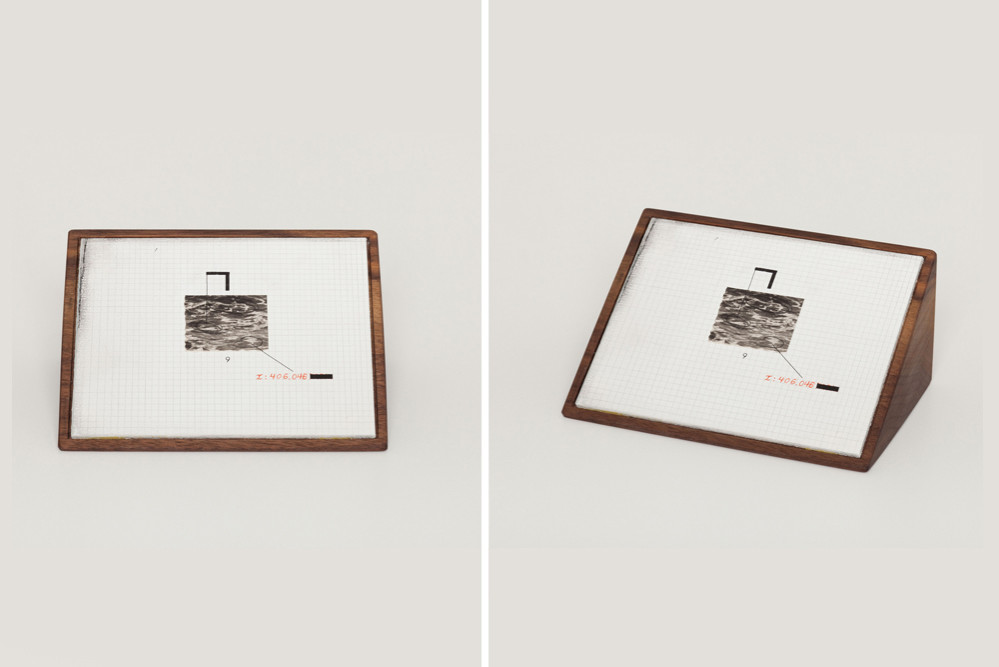
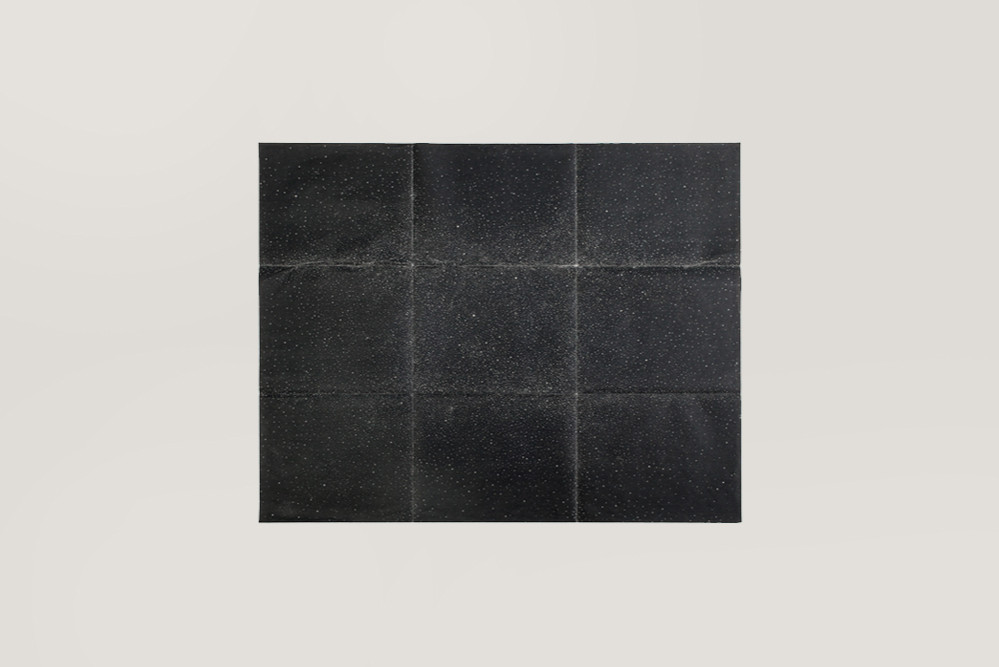
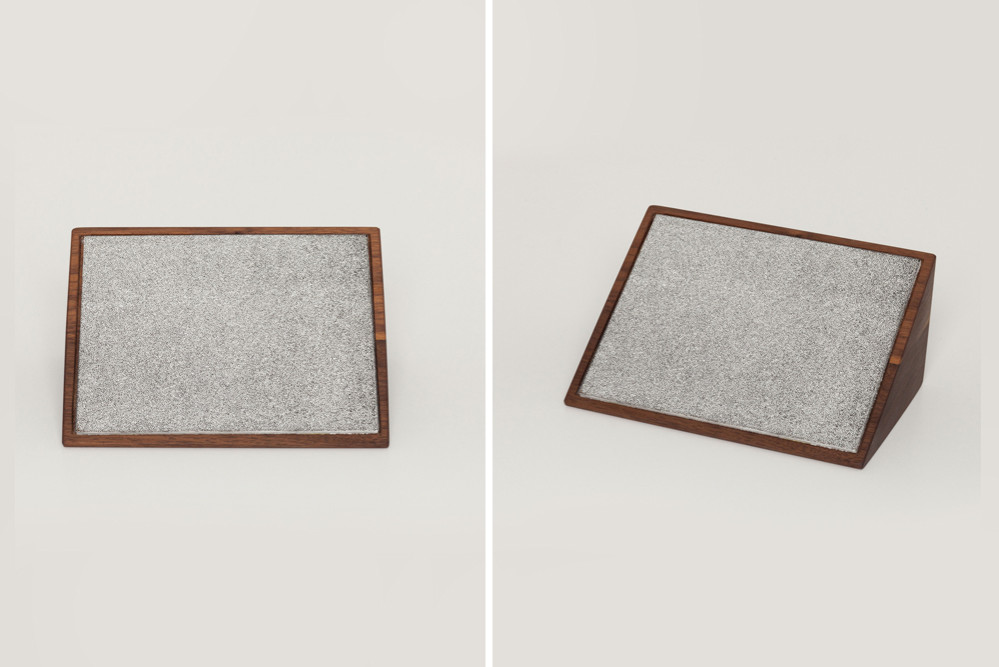
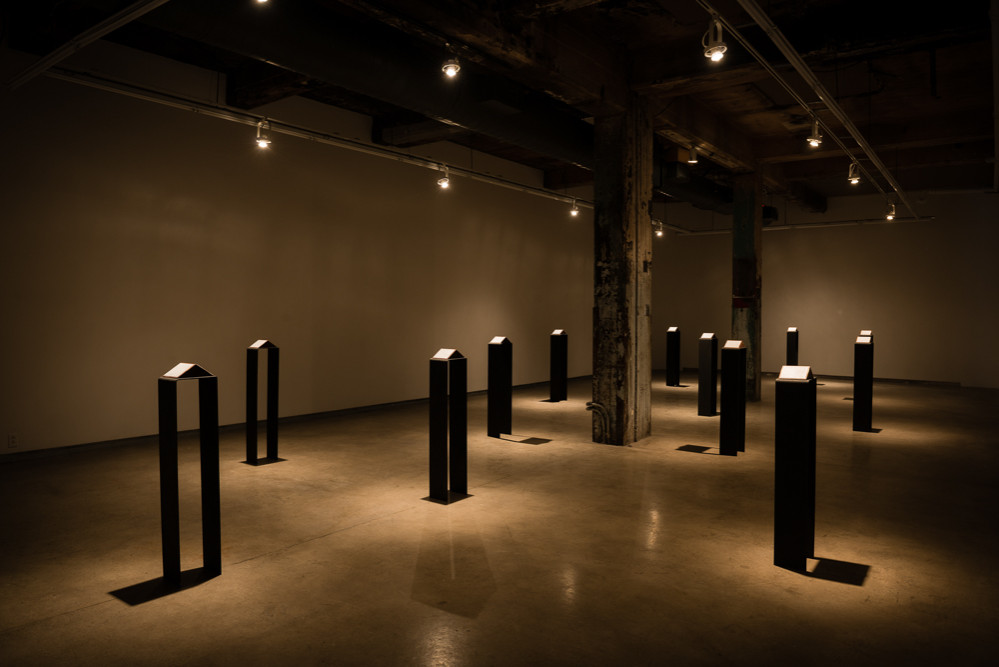
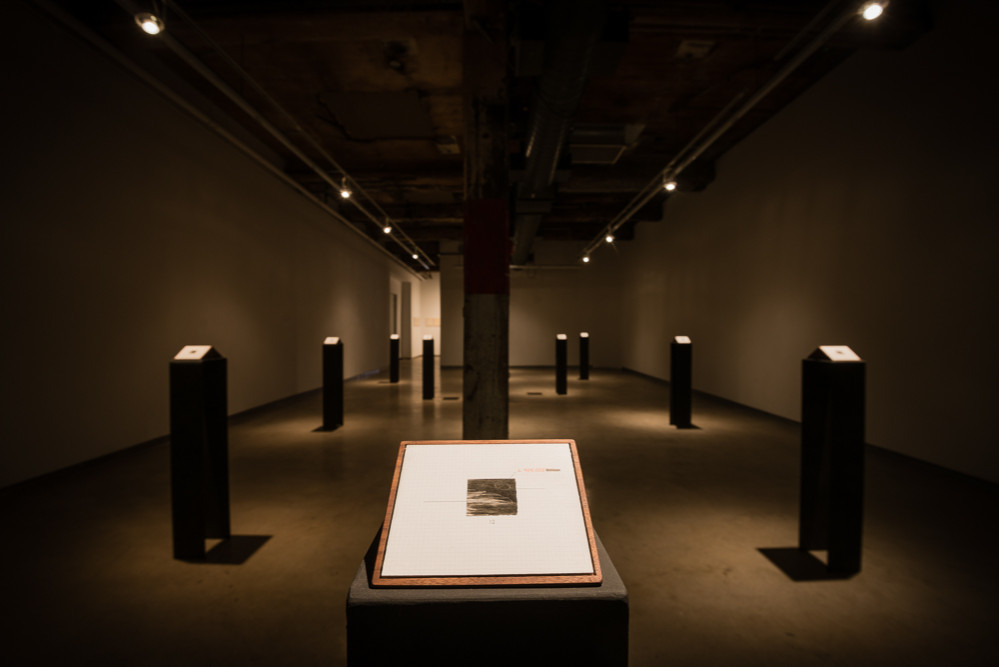

There is no asylum in the sea. No exit, nor reprieve: only an oceanic space that threatens to overwhelm us. And yet, this is what Hajra Waheed’s latest body of work promises us. A suite of twenty-four works mounted to triangular wood supports, Asylum in the Sea suggests a paradox: of finding respite while drowning, of making a temporary home in a churning, liquid environment. Small and intimate, resembling postcards, the compositions are placed throughout the room like storyboards, encouraging us to move between and around them as we attempt to build a narrative from them. The images we first see are abstracted fields of grey dots, the visual equivalent of static noise, but on their verso we find tiny collages: maps to something that has gone missing. Black and white photographs of waves, water and occasionally sky are set onto painted grids, numbered, then annotated with simple line drawings and hand written numbers. Circles and diagrammatic arrows draw our attention to places where something once was, while the digits recall radio frequencies used to send out distress signals, or a call for help, that went unanswered.
This fragmented approach to narrative that plays at the edges of what can be seen is characteristic of Waheed’s work, a sprawling, multimedia practice which – like the ocean itself – sometimes threatens to subsume the viewer in the currents of its histories, both personal and collective. Asylum in the Sea is just one moment within a much larger story, part of an ongoing body of work titled Sea Change (2013–) that Waheed describes as “a visual novel” that will unfold over many years and hundreds of works. At the centre of this novel are its nine protagonists, all missing, presumed lost at sea in the course of migrating to a better life. Each chapter is devoted to a different character, with the visual and textual traces of each figure occupying one room of a gallery, turning the novel into an immersive visual diary.
These intricate, continuously unfurling accounts could be fictional, but they also seem too familiar and too specific to be fabricated. History, and colonial history in particular, with its stories of home, migration, loss and disappearance, is the departure point for Waheed’s work. Her narratives, she writes, “are deeply influenced by my many lived experiences traversing borders, or rather, living among them. So many of us who live along these lines (either by choice or force) do go missing or disappear at times, just to re-emerge later.1”
Asylum in the Sea explores the function of displacement and transference, both as an artistic practice and as a metaphor for the imprints that colonialism leaves on its subjects. By taking found photographic images and transferring them onto canvases to be notated and painted over, Waheed’s work suggests that representations of people at sea are imprinted with histories of migration that we cannot escape. “Watermarks are embossed on the surface and in the grain,” anthropologist Ann Laura Stoler writes; “...they denote signatures of a history that neither can be scraped off nor removed without destroying the paper.2” How these characters went missing, we will perhaps never know. All we are offered is the stuff that swallowed them up: these absent figures who went undocumented, but have left their marks on us all the same.
1 Hajra Waheed, interviewed by Rosalyn D’Mello, “Artist Hajra Waheed On “Sea Change”, her India Debut Solo,” Blouin ARTINFO India, http://in.blouinartinfo.com/visual-arts/article/858124-artist-hajra-waheed-on-sea-change-her-india-debut-solo#sthash.IE02Rl7W.dpuf, accessed May 31, 2015.
2 Ann Laura Stoler, Along the Archival Grain: Epistemic Anxieties and Colonial Common Sense (Durham, NC: Duke UP, 2009), 8.

Hajra Waheed
Hajra Waheed’s works seek to address personal, national and cultural identity formation in relation to political history, popular imagination and the broad impact of colonial power globally. Her mixed-media practice consists of ongoing bodies of work that constitute a growing personal archive – one developed in response to all those seemingly lost amongst rapid regional development and/or political strife. Although works on paper remain the foundation of her practice, they often act as starting points for larger mixed media installations. Over the last decade, Waheed has participated in exhibitions worldwide, most recently including Collages: Gesture & Fragments, Musée d’art contemporain de Montréal, QC (2014), Sea Change, Experimenter, Kolkata (2013), (In) the First Circle, Antoni Tapies Foundation, Barcelona and Lines of Control, Herbert F. Johnson Museum of Art, NY (2012). Recipient of the prestigious 2014 Victor Martyn Lynch-Staunton Award for outstanding achievement as a Canadian mid-career visual artist, her works can be found in a number of permanent collections including the Museum of Modern Art, NY, the British Museum, London, the Burger Collection, Zurich and Devi Art Foundation, New Delhi. She lives and works in Montréal.
Curator
Anne-Marie St Jean-Aubre
